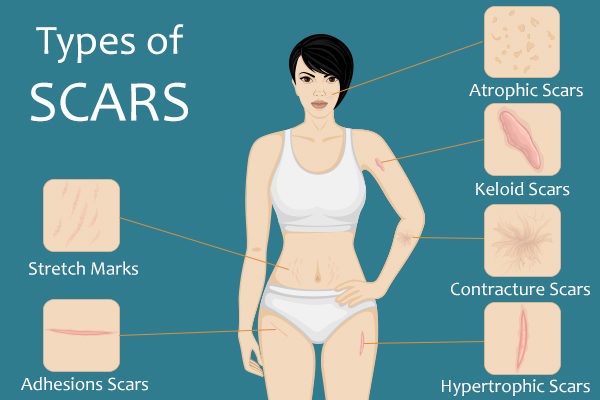Healing is a physiological process that occurs in the skin after a wound of any origin (surgical, accidental trauma, burns, post-inflammatory as in acne). Unfortunately, the resulting scars in many cases are not as aesthetic as we would like or can even be associated with discomfort or symptoms (itching, pain, difficulty in mobilizing a specific area). For all these cases of pathological or unaesthetic scars, there are different treatments or combinations of these that can help us to improve and hide them, explains the Plastic Surgeon in Delhi.
Correct treatment of a scar
The main thing to choose the correct treatment for a scar removal in Shalimar Bagh is to carry out an accurate dermatological diagnosis to determine what are the problems present. Sometimes we will have scars with a significant vascular problem, which are usually those that are very red, with a large amount of vascularization. Other times the problem has more to do with the volume of the scar, either because it is very thickened (hypertrophic) or because it is depressed (atrophic).
This diagnosis for scar removal in Shalimar Bagh will be made through physical examination and will sometimes require imaging tests such as dermoscopy or ultrasound, among others. Once the problems present in the scar have been determined, it is when you can choose the best combination of treatments for the case. It should be noted that the early treatment of scars, in the first weeks or months after their production, is the one that will achieve the best results, explains the Plastic Surgeon in Shalimar Bagh.
Common types of scars and their treatment
Here are some common types of scars and their possible treatments:
Acne scars
Acne scars are usually depressed, atrophic scars that appear on the face on the cheek, forehead, or chin. In some cases, they can also associate reddish coloration.
The best results are obtained with treatments aimed at filling in that lack of collagen present in the scars and releasing the fibrosis that these scars have in their lower part. For this, combinations of surgical techniques such as subcision (superficial cut below the scar) and fractional remodeling lasers (ablative, such as CO2 or Erbium; or non-ablative, such as Fraxel®) are usually used. To achieve better results, these techniques can also be combined with the administration of Platelet Rich Plasma injected into the treated areas, as it will help a faster recovery and enhance the effects of the other techniques, says the Plastic Surgeon in Paschim Vihar.
Surgical scars
The results of surgical scars can be very varied depending on the area in which the surgery has been performed, post-surgical care and the patient’s age, among others. One of the problems that we see most in surgical scars is excess vascularization that manifests as very red scars. In order to eliminate this staining, the best results are obtained with vascular lasers (pulsed dye laser and Neodymium laser) or intense pulsed light, says the Plastic Surgeon in Punjabi Bagh.
Keloid scars
Keloid scars are a special type of pathological scar that can appear associated with different origin: surgery, mainly back acne, accidental wounds or even appear spontaneously. These are very thickened scars, which grow progressively and even exceed the edges of the initial wound. The best results to slow its growth are obtained by combining vascular lasers, remodeling lasers and corticosteroid injections. Sometimes they may require other techniques such as surgical excision, cryotherapy or even radiation therapy, explains the Plastic Surgeon in Ashok Vihar.
Burn scars
Burn scars have special characteristics that require different treatment combinations. It is very common for these scars to have symptoms such as itching or pain, or even limit the mobility of the area they affect. The best results to achieve normalization of the skin are obtained with ablative fractional lasers (such as the fractionated CO2 laser) that activate a remodeling in the skin and help to release fibrosis in cases where the scar makes it difficult to move in an area. In some cases these lasers will be associated with other surgical techniques such as plasties or grafts, explains the Plastic Surgeon in Paschim Vihar.
Some areas heal well and others poorly
Sometimes many patients want to remove a mole or other lesion and ask us if they will have a scar. It is important to know that there are areas of the skin that have little tension, such as the face, so the scars are usually fine and tend to disappear. However, other areas have more tension, such as the back, chest, or shoulders, and if we perform an excision or have a wound in this area, the scar is usually more noticeable. So, check with your Plastic Surgeon in Shalimar Bagh about the chances that the scar from an excision will become large or even turn into a keloid.
In short, if you have a scar, treat it as soon as possible. It is important to classify the scar as atrophic, hypertrophic or keloid in order to establish the most appropriate treatment.
The key to scar removal in Shalimar Bagh is to combine techniques such as laser, drug injections, cryotherapy or botox. Unfortunately, creams are not very effective. The silicone sheets are useful to flatten the scar.
Therefore, if you have an unsightly scar, go to your plastic surgeon in Delhi, who can surely help you.

No comments:
Post a Comment